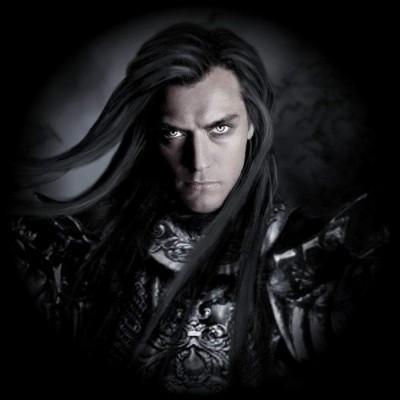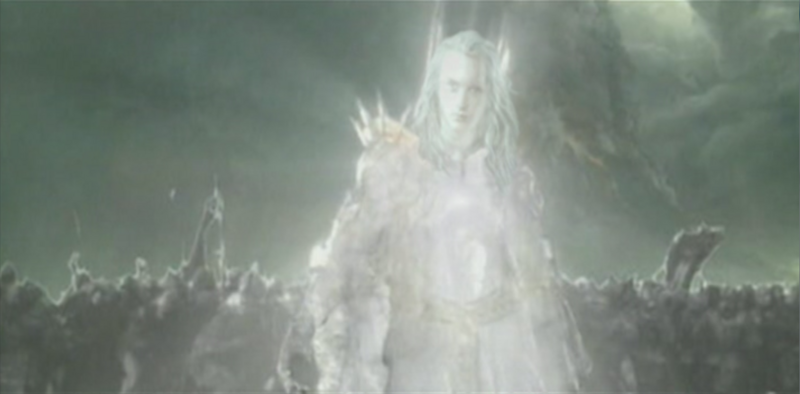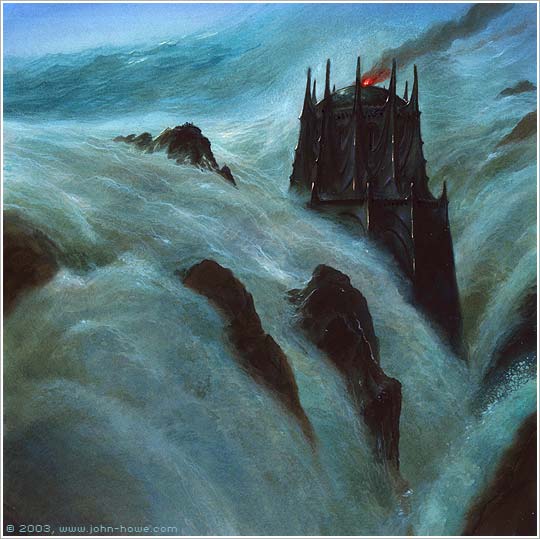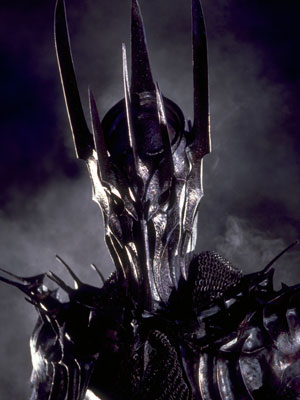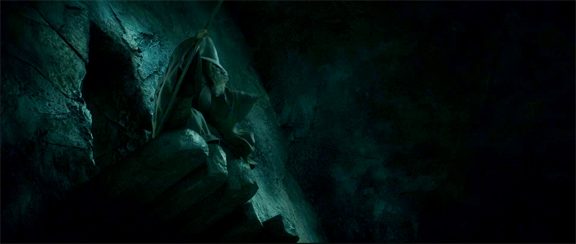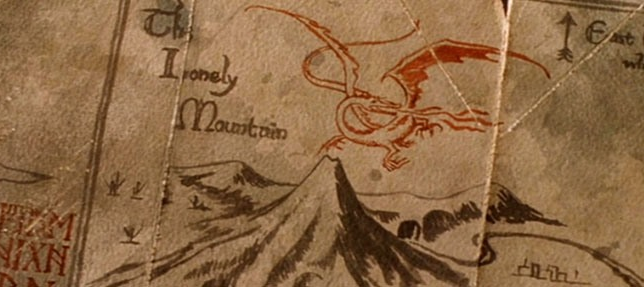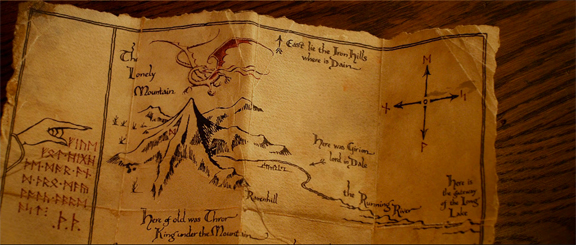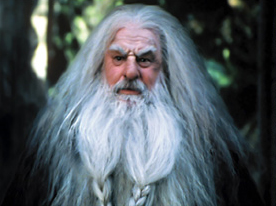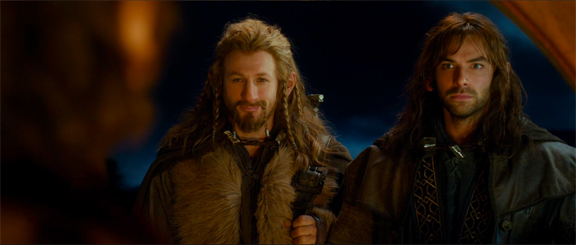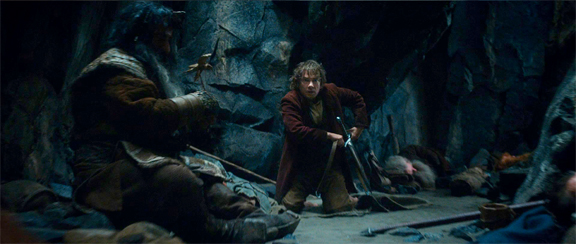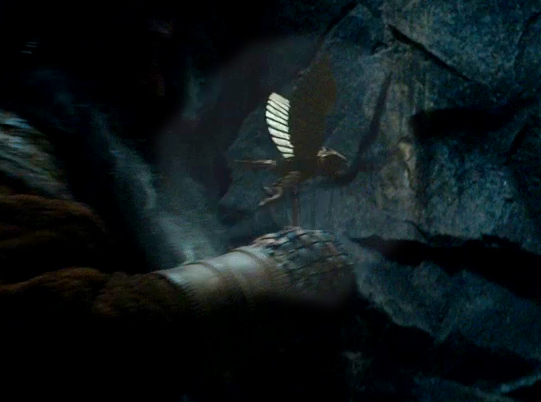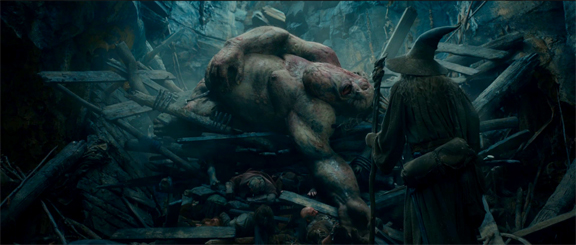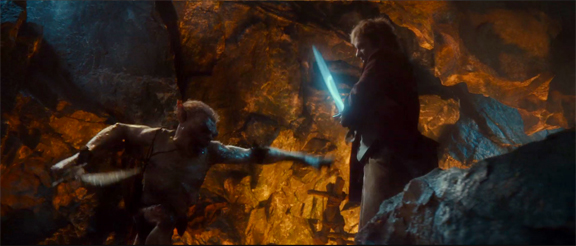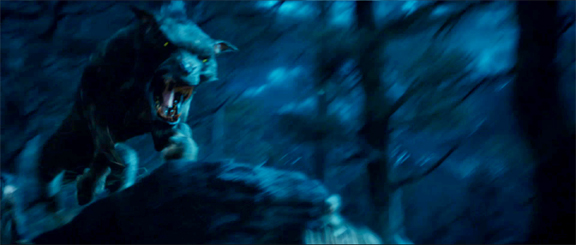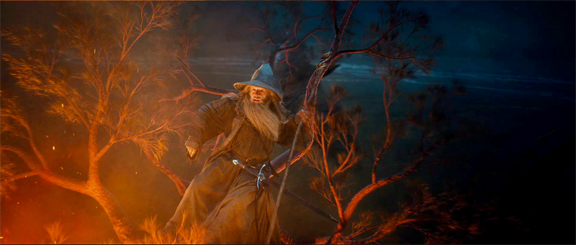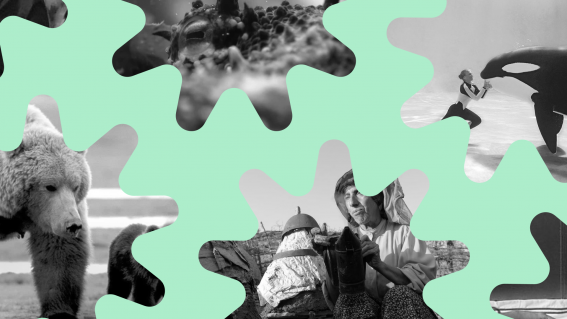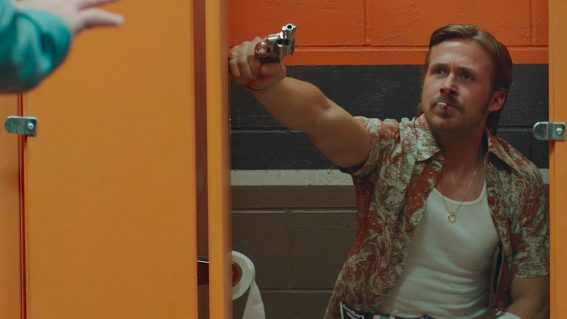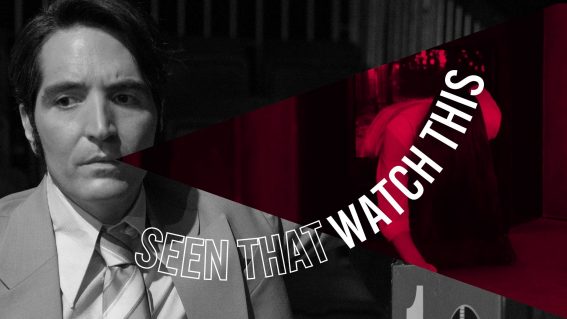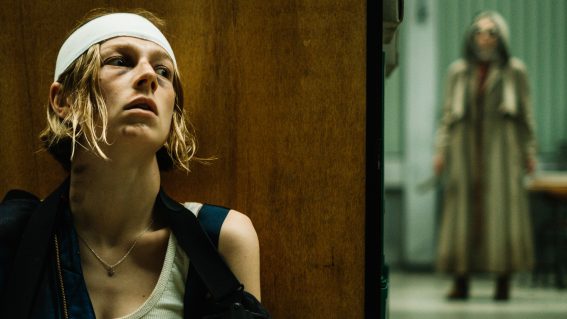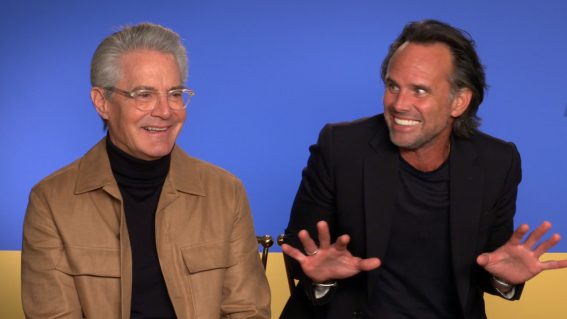Secrets Of THE HOBBIT Trailers – Part 2

With the first entry into Peter Jackson’s upcoming trilogy of The Hobbit only just over a month away, excitement and hype is building for Tolkien and movie fans all over the world. And, being someone who fits into both of those categories, it was only inevitable that I would throw my own two cents worth of analysis into the various marketing materials released regarding the first film: An Unexpected Journey. This is part two of that analysis, of which the first part can be found here. Suffice it to say, this is major spoiler territory and isn’t for anyone who hasn’t read the novel(s) and wants to be kept in the dark about the film’s plot.
So fill up your pipe, serve up a plate of elevensies and let’s see what other secrets we can uncover on what to expect from this new trilogy.
In the original novel of ‘The Hobbit’, Gandalf The Grey was called away near the halfway point of the book in order to attend to ‘more important business’ elsewhere. Designed simply as a plot device so that Bilbo could finally start to shine as the hero of the story (by being forced to help the dwarves out of numerous jams), Tolkien inadvertently created a wonderful concept of a ‘larger world’ to Middle-Earth by suggesting this notion that Gandalf was going off to have a wizard’s battle against an evil “Necromancer” holed up in a distant tower called Dol Guldur. By the time of the publication of ‘The Lord Of The Rings’, Tolkien had already retconned several major elements in ‘The Hobbit’ which was reflected in new printings of the novel and also in the prologue, story and appendices of ‘The Lord Of The Rings’. Most of these retcons had to do with establishing that the magic ring of invisibility picked up by Bilbo in Gollum’s cave was, in fact, the One Ring and that Gandalf had deep suspicions about its power and its control over Bilbo right from the very start. The other major retcon was establishing that the vaguely alluded to ‘necromancer’ was none-other-than Sauron himself.
Sauron, originally known as Mairon The Admirable, was once a powerful and remarkably intelligent spirit who was trained by his creator – Aulë the Smith God and also creator of the Dwarf race – in all manner of secret knowledge and magical crafts. But Mairon was soon corrupted by the influence and friendship of the Dark Lord Morgoth; a god (once known as Melkor) whose lust for power and greed to control all of Creation drove him to evil. Morgoth tutored Mairon in the black arts of sorcery and recruited him to spy on the other gods – known as Valar – until he was ready to declare war on them openly (the events of which is depicted in Tolkien’s epic-prose work ‘The Silmarillion’). Morgoth and his lieutenant Mairon eventually left the undying lands of Valinor and settled in Middle-Earth where they ruled with terrible power and Mairon renamed himself as Gorthaur The Cruel, becoming a master of illusion and manifesting himself in many different forms including that of an enormous werewolf, a serpent and a vampire. Though Morgoth was arguably far more powerful and bad-ass than Gorthaur could ever hope to be, Gorthaur’s talent was for secrecy, deception, manipulation was second-to-none and when Morgoth and his vast armies of Balrogs, Orcs, dragons and other monsters were finally defeated, Gorthaur convinced the elves, men and the Valar that he was repentant and begged for their forgiveness. While Morgoth was beheaded and his spirit was banished into The Void beyond The Door Of Night (a kind of limbo or Phantom Zone), Gorthaur fled and hid in Middle-Earth for almost 500 years before resurfacing as Sauron, the Lord of the Mordor and the master of The Dark Tower of Barad-Dur.
It was during this period that he disguised himself in another form: that of Annatar the Lord Of Gifts and, with his mastery of weaving bullshit, convinced the elves to forge the Rings Of Power while he, in secret, forged the master control ring known as The One using the knowledge he had learned from his creator Aulë. His plan failed however as the Elves detected his presence in their rings and immediately removed them. Undeterred, Sauron gave seven more rings to the Dwarves and nine rings to the Kings of Men dwelling in Middle-Earth and again he found that he was only partially successful as the dwarves were able to resist his control (though their rings gave their wearers and everyone around them an avaricious lust for gold). The men, however, fell immediately under his spell and slowly transformed into the Nazgul – the Ringwraiths who would serve him until their destruction as depicted in ‘The Return Of The King’.
For these actions, Sauron’s kingdom was attacked by the men of the island continent of Numenor, completely wiping out his armies and forcing him to flee back to Barad-Dur, promising to never do anything bad ever again. Some years later however, Sauron began to mass armies again and this forced the king of Numenor to march into Mordor with a massive force and physically capture Sauron, taking him back to Numenor as their prisoner. Again their inability to comprehend Sauron’s power for deception became their undoing; within a short time he had convinced the king to forgive him, then free him and elevate him to the status of adviser.
Sauron soon had the Numenorians eating out of his hand. He convinced them to worship the spirit of Morgoth, commit human sacrifices and attack Valinor – the Undying Lands and home of the Elves and the Valar – in order to seize control of the secret of immortality. But as soon as the Numenorians landed on the continent Valinor, they unwittingly violated a sacred promise to the Valar and as punishment their armies were wiped out and Numenor sank beneath the ocean. In addition, Valinor and Middle-Earth were permanently split into different dimensions of existence, ensuring that only Elvish boats had the power to sail between the two lands. Only a few faithful Numenorian refugees, led by Elendil who had refused to listen to Sauron, escaped and landed in Middle-Earth; going forth to found the kingdoms of Gondor and Arnor. Sauron’s physical body didn’t escape the destruction of Numenor and only his immortal spirit was able to flee back to Mordor thanks to the One Ring in which he had imbued part of his own life-force. But he was never able to take a deceptive physical form again and when he did appear, it was either as a spirit encased in armor or as a blackened and burned man perpetually engulfed in flame (a curse rising from the One Ring’s birth in the fires of Mount Doom).
Understandably pissed off as hell, Elendil – now king of all the surviving race of men – forged an alliance with the Elves of Middle-Earth and raised an army to destroy Sauron and his Ring of Power once and for all. They stormed the gates of Mordor and met with Sauron’s forces and though Elendil was killed, his son Isildur successfully sliced the One Ring from Sauron’s hand as depicted in the opening scenes of The Fellowship Of The Ring and cut him from his source of power. But because Isildur didn’t destroy the ring and instead claimed it for himself, Sauron’s spirit was able to flee once again. With the risk that he would return to power, the Valar sent five spirits – the Istari – to help protect Middle-Earth and guide its people as long as the danger of Sauron and his ability to lie and deceive others into following him still existed. The Istari were of course the five wizards of Middle-Earth including Saruman, Gandalf, Radagast and are discussed in a previous post of this blog.
The story of The Hobbit Trilogy picks up 3,000 years later with the One Ring still presumed to be lost (possibly washed out to sea after the events of Isildur’s death) and Sauron’s spirit hiding somewhere in Middle-Earth away from the prying eyes of the wizards of the Valar and the Elves who vanquished him such as Elrond and Galadriel. Yet the world is still full of the deadly creatures he and Morgoth had unleashed during their reigns of terror including trolls, orcs, wargs, giants, spiders, ringwraiths…and dragons.
DOL GULDUR
One of the main plot threads of The Hobbit film trilogy will focus around the discovery that Sauron’s spirit is alive and well, living in a fortress in the forest of Mirkwood known as Dol Guldur. From here, he begins to fill the surrounding forest with evil creatures and sways control over the nearby goblins and orcs while false rumours spread throughout the land that an ‘evil wizard’ or ‘necromancer’ is actually behind this. Throughout the trilogy, the White Council (comprising of Elrond, Galadriel, Saruman, Gandalf and several other prominent leaders of Middle-Earth) are searching for Sauron and Gandalf, specifically, comes to suspect that the Necromancer of Dol Guldur may actually be Sauron in yet another one of his disguises.
In The Hobbit trailers, Dol Guldur is depicted as a set of ruins high upon a hill. Some fans wonder about this since, according to Tolkien, the place is meant to be a fortified compound of evil and not a seemingly abandoned castle. However, it is important to remember that in the novel of ‘The Hobbit’, Gandalf mentions visiting Dol Guldur many years earlier and discovering Thorin’s father Thrain in its dungeons. Given that Thrain had been missing for nearly ‘a hundred years’, having gone off to seek new fortunes for his family after Smaug the dragon claimed their mountain home, this could have occurred anytime in that period and suggests that what we see of the place and Gandalf’s visit to it is a flashback, maybe decades earlier, before Sauron is able to transform the place into his fully operational fortress.
Our suspicions of this flashback are confirmed by this fleeting sequence seen in The Hobbit teaser trailer showing Gandalf combating some kind of undead-looking creature in the ruins of Dol Guldur. The shots are extremely quick, but a frame-by-frame examination reveals the telltale, angular pattern on the creature’s clothes, the long hair and beard and its short stature which all point to the fact that this creature is in fact a dwarf. And the only dwarf Gandalf had ever met in Dol Guldur was Thrain.
This revelation is particularly interesting since Tolkien never describes the pair’s encounter, only that Thrain was “witless” and “hardly knew himself” and thus Gandalf wasn’t able to rescue him, merely escape with the map of Erebor, the key to its secret door and a promise to ensure the items found their way to Thrain’s son. It was always traditional to assume that Thrain was found by Gandalf imprisoned in a cell or perhaps attached to torture equipment and near death, so seeing that Peter Jackson and Co decided to depict Thorin’s father as a zombiefied creature under the spell of Sauron comes off as not only refreshing, but also clever since it exemplifies the power of the ‘Necromancer’ (i.e. a wizard who supposedly can control aspects of death).
How Thrain ended up in the dungeons has always been a point of speculation for the characters in Tolkien’s stories, but it was often suggested that Thrain actually had one of the three surviving Dwarven Rings of Power, inherited from his father Thror before is death at the gates of Moria, and thus Sauron’s forces were able to track, capture and wrench it from him. The presence of the ring would also act as a motivator for Thrain to abandon his family (including a young Thorin) in order to seek gold and treasure in the greater world.
Does this imply that, like the rebuilt Barad-Dur in The Two Towers, the second film in The Hobbit trilogy will reveal a fully-functional and rebuilt Dol Guldur? That is something we can only speculate…at least until the trailers for The Desolation Of Smaug come out. Exactly how Sauron will be depicted is also a head-scratcher, given his inability to disguise his physical form in any pleasant way (according to the novels anyhow), but his voice and motion-captured performance will be created by Sherlock Otter-Face himself: the great Benedict Cumberbatch.
THROR’S MAP & KEY
Among the most famous of items that appear in the ‘The Hobbit’ is Thror’s famous map of the Lonely Mountain and the key to it’s famously hidden ‘backdoor’. Made by Thorin’s grandfather as an heirloom to his family in the hopes that it could someday be used to take the mountain back from the fire-breathing monster that claimed it a hundred years prior.
The map first makes its cinematic appearance in a very short shot in the start of The Fellowship Of The Ring as Gandalf steps inside Bag End to visit Bilbo. As he wanders through the living room, Gandalf’s gaze falls upon a table and spies Thror’s map, flattened and well-worn, but lovingly framed. The shot was designed as a sort of ‘throwaway easter egg’ for Tolkien fans in the audience to enjoy (though I’m not sure how they got away with it since the map is part of the intellectual property of ‘The Hobbit’ novel which New Line did not own at the time).
In the second trailer for An Unexpected Journey, we glimpse the map as it was used in action by Thorin’s Company. Close examination shows that it is actually a slightly different map, though this does not necessarily account for the fact that Bilbo or one of the other Dwarves may have had to repair it by augmenting the writing and illustrations in between the events of The Hobbit and The Lord Of The Rings or that Bilbo’s map is actually an imitation and that the original remained at Erebor with Thorin’s people (or simply that, for some reason, the original version used in the previous trilogy was not usable/available for this film).
As for Thror’s key to Erebor, it has been glimpsed as a collectible prop from WETA Workshop and is definitely keeping in the design aesthetics of Dwarvish culture. If all goes in accordance with the novel, its use in the story will not become important until the second or third film.
THE DWARVES – PART 2
Continuing our roll-call of the dwarves of Thorin’s Company from the last blog post, here are the final six members of that party:
Brother of Gloin and uncle to Gimli, Oin (played by New Zealand actor John Callen) is appropriately depicted with similar facial features to his two kinsmen. Apparently hard-of-hearing, he is depicted as carrying an ear-trumpet (a detail not in the books) which may be the basis for his cinematic character given that he is among the ‘secondary dwarves’ from the novel whom Tolkien did not feature as an individual character to any large degree. It will be interesting to see how Jackson and Co take Oin (and his apparent disability) and turn him into a fully developed member of Thorin’s party.
Oin, tragically, was also part of Balin’s party to retake the Mines Of Moria and was killed by the creature known as the Watcher In The Water (the tentacled monster that attacked the Fellowship sixty years later and tried to take Frodo). Exactly why Gimli didn’t appear to be as upset by this fact as he is by Balin’s death remains a mystery, though it is speculated that perhaps he was mourning for losing both cousin and uncle when he broke into tears at the foot of Balin’s Tomb.
Gloin (played by New Zealand actor Peter Hambleton) is father of Gimli and brother of Oin. His wig and facial prosthetics match closely to that of John Rhys Davies depiction of Gimli. In the novel, both Oin and Gloin are reknown to be bickering brothers who constantly attempt to shirk their adventuring duties onto each other, especially starting campfires (which they’re both adept at). Gloin was also Bilbo’s harshest critic and was highly suspicious of his use to their mission. In the above picture, we see Gloin being rescued after being captured and paralyzed by the Giant Spiders of Mirkwood.
Interestingly enough, a sixty years older Gloin also appears at the Council Of Elrond in a blink-and-you’ll-miss-him moment. In the book, Gloin was a major contributor to the Council sequence and brought much news regarding the surviving dwarves of Thorin’s Company (including Balin, Oin and Ori’s attempt to retake Moria) as well as Sauron’s attempt to lure their people over to his side by sending a messenger; who promised to return the surviving three of the seven Dwarvish rings of power if they gave up the whereabouts of Bilbo, the Ring or the Shire. It is not known whether Gloin, in the films, actually had any lines at the Council or whether he was simply there as a background character to add a level of authenticity.
DETAIL OF NOTE: Much is speculated about the framed picture on the left hand side of the screenshot. Many feel that the figure is female, but its identity is disputed heavily among fans.
Some suggest it is one of Bilbo’s more adventurous, Took ancestors whom he secretly admired, but never had the courage to follow in their footsteps for adventure and excitement (the Tooks – Pippin’s family – were his mother’s people and were renown adventurers, explorers and “trouble-makers”). Others suggest it may be a glimpse of a female dwarf, perhaps Gimli’s mother (though the appendices famously notes her for having an extraordinary and beautiful beard)? Finally there’s thought that it may be a child’s portrait of young Gimli himself? Either way, the locket looks as if it will play some major role in the development of one or more characters in the film and its presence in a sequence where Bilbo finally wins Gloin’s respect (at least in the book) suggests that it is of some import to either character.
Okay. I know what you’re thinking: #hotdwarves #wtf?
First, I think this is genius; not just for storytelling reasons, but also for morphological diversity since this trilogy finally gives us a broad range of Dwarven genetics beyond the stock-character appearance of Gimli in the other trilogy. Second, being descended from the famous Longbeards clan (of which their uncle Thorin Oakenshield belongs), WETA designers have had the sense to create a consistent ‘pleasing-to-the-human-eye’ look for these two brothers and their uncle Thorin. Finally, if you don’t buy the idea of an ‘attractive dwarf’, then simply pretend that they’re particularly ugly dwarves who’re constantly harassed by human women with a fetish for small hairy male underwear models.
OR perhaps they’re actually female dwarves in disguise? *taps nose knowingly*
Described has having a famously long nose, Fili (played by New Zealand actor Dean O’ Gorman) shares his brother’s (and uncle’s) charming Scandinavian looks. Kili (played by Aidan Turner) is the most human looking of all of the Dwarves and appears to be the only one with no facial prosthetics as part of his design. Both brothers are the most nimblest and keenest of the party, noted for their professionalism and expertise as scouts and hunters. They’re also famously jolly and optimistic, almost never complaining no matter how hard the going gets, which dramatically adds pathos to the story given the dark fate they share with their Uncle Thorin.
Bombur, one of the six primary dwarves, is arguably the most memorable and the most useless of Thorin’s Company from the book. Played by Stephen Hunter, Bombur is an obese (and possibly narcoleptic) dwarf who has the misfortune for causing many of the Company’s misadventures; usually because the Company doesn’t take heed of his needs or his lack of ability until it’s too late. His tendency to fall asleep at crisis moments becomes a constant risk to the Company. Exactly why Bombur joined the party is a bit of a mystery since he doesn’t show much interest the retaking of the mountain, at least as a character in the book. It is often assumed that his presence was because of his brother Bofur and his distant cousin Bifur. It will be interesting to see if Bombur is developed into a more rounded (haw haw) character in the film trilogy who rises above his archetypical role as a comic foil.
Thorin Oakenshield, leader of the band of thirteen dwarves (and one reluctant hobbit) who set out to reclaim the Lonely Mountain and its treasures (including the Arkenstone) from the terrible dragon Smaug. I wonder how many fans were surprised by Thorin’s design since it had become fashionable to depict him as a much older dwarf, closer to Balin’s appearance, than as a handsome adventurer and general in his prime? Uncle to Fili and Kili, Thorin hails from the Longbeard Clan (known as Durin’s Folk) and was present when Smaug landed on Erebor, slew his kin and claimed the mountain for itself. He and his family (including grandfather Thror and father Thrain) fled into exile.
Thorin eventually grew up in poverty as a skilled craftsman and later as a seasoned warrior who took part in the long and bloody war, against the Goblins of the Misty Mountains, which began when his grandfather Thror was murdered while exploring Moria in the hopes of finding his people a new home (a sequence which we may see in the films given that Azog, the goblin lord responsible for Thror’s death, has apparently been cast in the film). In fact, some sharp-eyed fans suggest that the cat-like goblin wielding the spiked club in this poster:
…could be our first look at Azog, however this character has actually been revealed to be a goblin captain named Bolg – Azog’s son – who plays a major role in the third film of the new trilogy and may make a cameo appearance in the first film. After the end of the Goblin War, Thorin’s father – Thrain – soon left to find new fortunes for his family and subsequently went missing for almost a century until Gandalf revealed the dwarf’s ultimate fate in the dungeons of Dol Guldur. Now come unto his own, Thorin seeks to reclaim the mountain, slay the dragon, take his position as King and restore the glory of his culture.
While it may not be depicted in the trilogy, Thorin was contemplating this ambitious goal while stopping over for a night in the village of Bree (possibly in the Prancing Pony Inn) when he recognized Gandalf sitting at the far end of the room and approached him for advice. This act ultimately led him to founding his Company Of Dwarves and their eventual meeting at Bag End.
‘Oakenshield’ is not Thorin’s actual name, but a mark of respect stemming from one of his battles with the Goblins where, at the point when his own shield was shattered in a fight, he chopped down a huge and thick oak branch and used that to defend himself. Thorin is mentioned only once in The Lord Of The Rings film trilogy where, in the Extended Edition, Gandalf talks about Thorin gifting Bilbo a chain-shirt made of mithril (presumably from the dragon’s horde inside Erebor) which later saves Frodo’s life when he is stabbed by the cave-troll. It is assumed we will see this sequence in the third film.
Among his many contributions, Thorin founded the pop culture in-joke that dwarves were haughty, avaricious, axe-wielding, homicidal maniacs obsessed with hoarding (and incessantly singing about) gold.
GOBLIN TOWN
Perhaps the biggest action sequence to appear in An Unexpected Journey will be the Dwarves misadventures with the goblins and their eventual escape. While the lifestyles of orcs and goblins are hinted at in the Mines Of Moria in The Fellowship Of The Ring and glimpsed briefly in Mordor in The Return Of The King, this film will offer the first chance to see goblins (who unofficially are a more feral version of Orcs) in their home environment; a subterranean village in the Misty Mountains known only as Goblin Town.
The sequence famously begins with Bilbo and the Dwarves taking shelter in a cave in the Misty Mountains and, while everyone else is asleep, Bilbo is woken by a secret passage opening in the cave and the goblins stealing their ponies and provisions. The above picture seems to be from the very moment that Bilbo notices this, seeing as he’s reaching for his sword while looking on in terror.
DETAIL OF NOTE: In the above screenshot, you’ll also notice Bifur absently and obliviously playing with some kind of mechanical bird or possibly even representation of Smaug the dragon.
This little detail exemplifies how much the Dwarf culture of Middle-Earth has been realized in these films since it is known that – apart from digging for precious minerals and building cities underground – the Dwarves were renown for their incredible machines, tools and magnificent toys which were in demand all over the world. Before the coming of Smaug, the Dwarf Toy Market was wonder of the region and Bifur’s toy is just one such representation of the mechanical marvels they used to manufacture and sell to the other peoples of Middle-Earth.
After their capture, the Company is brought forth before The Great Goblin (played by Dame Edna herself, Aussie comedian Barry Humphries), ruler of Goblin Town and from there our heroes must make their escape with the help of some interference by Gandalf and – possibly – by the fact that the goblins recognize Thorin and Gandalf’s swords (Orcrist and Glamdring) in their cultural memories as terrible weapons that wrought doom to their ancestors. The above screenshot, a major spoiler from the first trailer, shows the dead Great Goblin in what appears to be the end of a spectacular action/chase sequence which can be glimpsed in other parts of both trailers.
THE WARGS & THE EAGLES
Two famous species seen in The Lord Of The Rings trilogy make a spectacular return in The Hobbit and will no doubt be much to the delight of fans, especially those not familiar with the books.
The Wargs of The Hobbit embody a more traditional look and feel compared to the hyena-like creatures seen in The Two Towers and The Return Of The King. Reputedly a design change specifically enacted by Guillermo Del Toro when he was still slated to direct, I think a lot of fans will welcome seeing the classical ‘giant wolf’ appearance of these creatures which embodies not only the storybook aspects of ‘The Hobbit’ novel, but also now shares a passing resemblance to Grond: the famous warg-shaped battering ram used by the Mordor orcs to break down the gates of Minas Tirith which was clearly designed and built long before the hyena-like wargs were created. Some fans may admonish the lack of continuity, but I don’t think it’s unreasonable to expect different species of wargs to exist across Middle-Earth, depending on the region.
Though the Giant Eagles of Middle-Earth have been seen in other promotional material, their appearance in the trailers is very subtle. Sharp-eyed fans, however, can spy them moving about in silhouette amidst the background of the above shot; clearly taken from the finale of the warg-chase where the Company is forced to climb trees to get away and then those trees are set on fire by their pursuers.
In the novel, both Wargs and Eagles are capable of speech though it is not really clear whether they can be understood by everyone, or by those who speak their language. It remains to be seen whether these animals will talk in the films or will be rendered silent.
THE MUSIC OF MIDDLE EARTH
When Howard Shore was announced to be composer for The Lord Of The Rings film trilogy, it raised a collective “whaaaaaa…???” from both filmmakers and film music fans. Shore, renown for his eerie and bleak music for such dark works as David Fincher’s serial killer masterpiece SE7EN, the delightfully kooky Ed Wood, thrillers such as Single White Female and every single one of David Cronenberg’s body-horror-nightmares from Scanners to Dead Ringers, was probably at the very bottom of everyone’s wish-list for tackling ‘the ultimate dream job’ for any Hollywood composer.
The fact that, despite his filmography, he produced one of the most significant film scores since John William’s original Star Wars music – in terms of impact on popular culture, familiarity and as a formidable body of work – is nothing less than incredible. Perhaps it is also testament to Peter Jackson’s genuine ability to pick amazing talent and that, somehow, he managed to see the music of Middle-Earth inside the guy who scored films such as The Silence Of The Lambs and The Fly. Either way, it’s impossible to imagine The Lord Of The Rings trilogy without Shore’s music…so imagine the surprise and delight of fans when we were treated to a glimpse of Shore’s brand new score for The Hobbit during in the first teaser trailer! And not just any old piece of score, but an actual, honest-to-goodness, song from the novel of ‘The Hobbit’ itself.
“Over The Misty Mountains Cold” is a song sung by Thorin’s Company at Bag End (see timecode 00:50 in the teaser trailer) which retells the splendor of their home at Erebor and a first-hand account of Smaug’s arrival and devastation. At its core, it embodies the central character motivation and themes of ‘The Hobbit’ and to see it performed in the trailer is electrifying. While it is not the first time songs from the novels have appeared in the films (the Lord Of The Rings Extended Editions contain of 10 of the 30+ songs from the novel, though all are mere snippets), none of those songs form the backbone of the story the way “Over The Misty Mountains Cold” does, especially given that Shore seems to have based his primary theme music for The Hobbit around it (see timecode 01:50 in the teaser trailer). So taken were fans by this theme, many endeavored to release their own takes on it including this quiet piano cover:
And, even more impressive, this incredible symphonic suite comprised of all of Shore’s ‘new music’ that features in the teaser trailer as rearranged by a young composer in Germany:
I think it’s fairly safe to say that the music for The Hobbit Trilogy is not only safe hands, but that we may yet hear some of Shore’s best work to date.
ANOTHER TRAILER?
Now at the end of our analysis, it has to be asked: can we expect another trailer before the premiere of An Unexpected Journey? There is some precedent to suspect the answer is yes. First we haven’t really seen any marketing actually telling us what the story of the first film is about i.e. that the dwarves are trying to reclaim their mountain back from an evil dragon. It is important, in the marketing of any film, that one of the trailers be very specific about the primary story and its primary protagonists. Secondly, The Fellowship Of The Ring indeed had two theatrical trailers (plus a long web teaser and a very short theatrical teaser advertising for the entire trilogy) which really nailed down the specifics of the characters and the story. Lastly we have not really seen any footage of the film past the chase in Goblin Town (i.e. Beorn and their adventures in Mirkwood involving the spiders, Legolas and their escape from the Elf King’s hall) which ought to be revealed if An Unexpected Journey is still ending with our heroes floating down the barrels towards Laketown (as depicted in the Comic-Con banner promoting the film).
When are we likely to see another trailer, if one exists? No later than within the next 4 weeks I would say. But then, there is the chance that there may not be another trailer and that Warners will rely on the goodwill and popularity of The Lord Of The Rings as its primary drawcard for audiences.
And this brings us to the end of our trailer analysis. There are of course other aspects that we have not yet covered such as the depiction of Beorn (whom we see in bear form in the Comic-Con banner) or the Jackson-created female elf character Tauriel, but then…we don’t want to spoil everything now do we?
I leave you now with Led Zeppelin’s Tolkien themed track “Ramble On”:
Thanks for reading!

